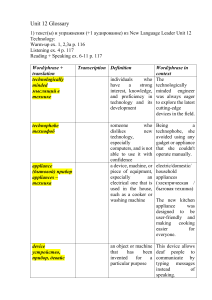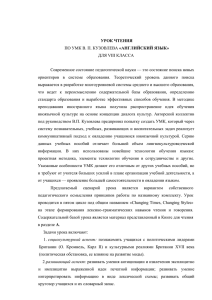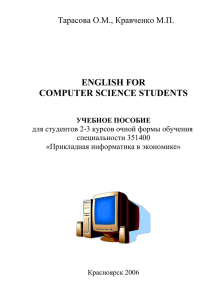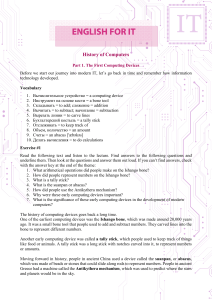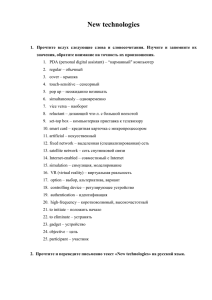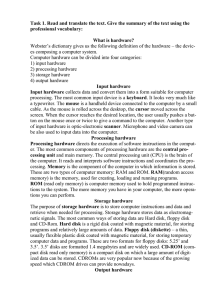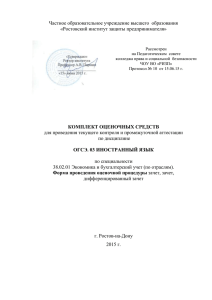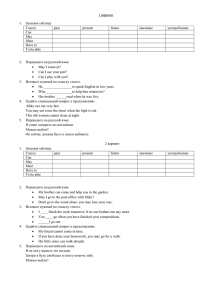Task 1. Read and translate the text. Choose the information in it to
реклама
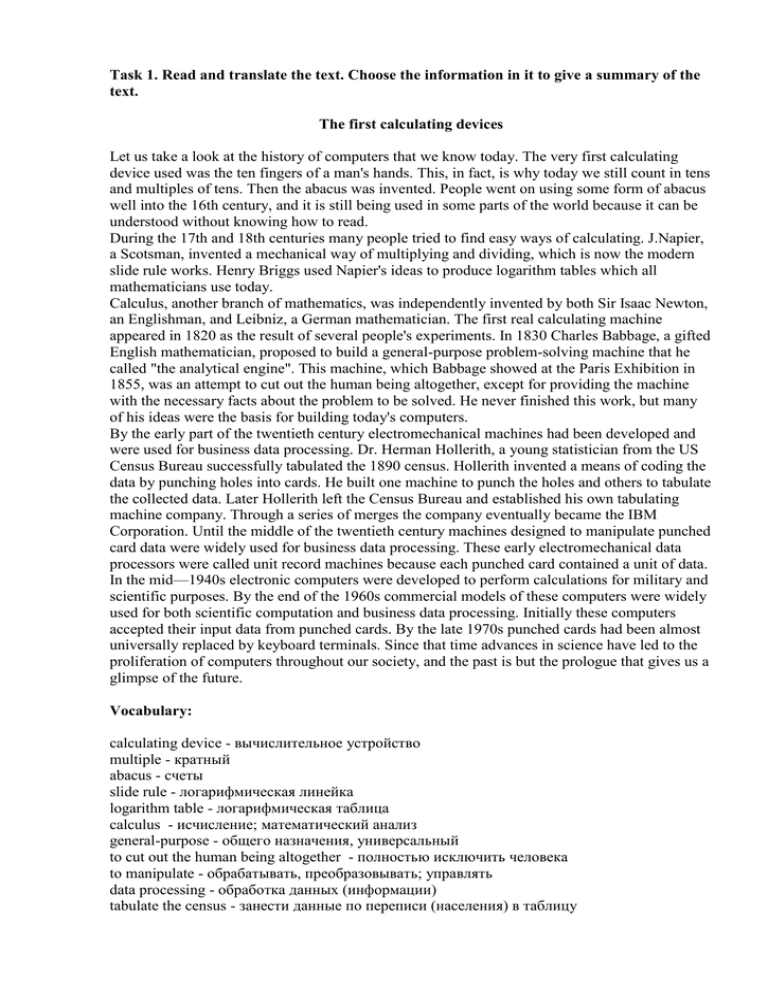
Task 1. Read and translate the text. Choose the information in it to give a summary of the text. The first calculating devices Let us take a look at the history of computers that we know today. The very first calculating device used was the ten fingers of a man's hands. This, in fact, is why today we still count in tens and multiples of tens. Then the abacus was invented. People went on using some form of abacus well into the 16th century, and it is still being used in some parts of the world because it can be understood without knowing how to read. During the 17th and 18th centuries many people tried to find easy ways of calculating. J.Napier, a Scotsman, invented a mechanical way of multiplying and dividing, which is now the modern slide rule works. Henry Briggs used Napier's ideas to produce logarithm tables which all mathematicians use today. Calculus, another branch of mathematics, was independently invented by both Sir Isaac Newton, an Englishman, and Leibniz, a German mathematician. The first real calculating machine appeared in 1820 as the result of several people's experiments. In 1830 Charles Babbage, a gifted English mathematician, proposed to build a general-purpose problem-solving machine that he called "the analytical engine". This machine, which Babbage showed at the Paris Exhibition in 1855, was an attempt to cut out the human being altogether, except for providing the machine with the necessary facts about the problem to be solved. He never finished this work, but many of his ideas were the basis for building today's computers. By the early part of the twentieth century electromechanical machines had been developed and were used for business data processing. Dr. Herman Hollerith, a young statistician from the US Census Bureau successfully tabulated the 1890 census. Hollerith invented a means of coding the data by punching holes into cards. He built one machine to punch the holes and others to tabulate the collected data. Later Hollerith left the Census Bureau and established his own tabulating machine company. Through a series of merges the company eventually became the IBM Corporation. Until the middle of the twentieth century machines designed to manipulate punched card data were widely used for business data processing. These early electromechanical data processors were called unit record machines because each punched card contained a unit of data. In the mid—1940s electronic computers were developed to perform calculations for military and scientific purposes. By the end of the 1960s commercial models of these computers were widely used for both scientific computation and business data processing. Initially these computers accepted their input data from punched cards. By the late 1970s punched cards had been almost universally replaced by keyboard terminals. Since that time advances in science have led to the proliferation of computers throughout our society, and the past is but the prologue that gives us a glimpse of the future. Vocabulary: calculating device - вычислительное устройство multiple - кратный abacus - счеты slide rule - логарифмическая линейка logarithm table - логарифмическая таблица calculus - исчисление; математический анализ general-purpose - общего назначения, универсальный to cut out the human being altogether - полностью исключить человека to manipulate - обрабатывать, преобразовывать; управлять data processing - обработка данных (информации) tabulate the census - занести данные по переписи (населения) в таблицу means of coding - средства кодирования (шифровки) to punch the holes - пробивать отверстия punched card - перфокарта to perform - выполнять, производить (действие); осуществлять; unit of data - единица информации Keyboard terminals - терминал (вывод) с клавишным управлением proliferation - размножение, быстрое увеличение Task 2. Look back in the text and answer the following question: 1. What was the very first calculating device? 2. What is the abacus? 3. What is the modern slide rule? 4. Who gave the ideas for producing logarithm tables? 5. How did Newton and Leibniz contribute to the problem of calculation? 6. When did the first calculating machine appear? 7. What was the main idea of Ch.Babbage's machine? 8. How did electromechanical machines appear and what were they used for? 9. What means of coding the data did Hollerith devise? 10. How were those electromechanical machines called and why? 11. What kind of computers appeared later? 12. What new had the computers of 1970s? Task 3. Find the English equivalents in the text. Вычислительное устройство; легкий способ вычисления; поэтому (вот почему); кратное десяти; изобрести механический способ умножения и деления; логарифмическая линейка; составить таблицы логарифмов; математический анализ; изобрести независимо (друг от друга); в результате; полностью исключить человека; кроме (за исключением); обработка деловой информации; средство кодирования информации; перфокарты; пробивать отверстия; оформить собранные данные в таблицу; работать с данными на перфокарте; устройство, записывающее информацию блоками; единица информации; выполнять вычисления; для научных целей; клавишный терминал. Task 4. Remember the meaning of the given verbs. Use your dictionary. To compute, to invent, to know, to multiply, to divide, to depend, to solve, to provide, to process, to code, to punch, to collect, to design, to store, to contribute, to use, to manipulate, to assemble, to connect, to consume, to rely, to divide, to multiply, to inform, to instruct, to discover, to operate. Task 5. Translate the following word combinations including: A: Participle I Computers using vacuum tubes; the machine calculating mathematical problems; the computer keeping instructions in its memory; binary code storing data and instructions; the vacuum tube controlling and amplifying electronic signals; computers performing computations in milliseconds; electronic pulses moving at the speed of light; students coding the information by using a binary code; devices printing the information; keyboard terminals replacing vacuum tubes. B: Participle II The given information; the name given to the machine; the coded data; the device used in World War II; the invention named ENIAC; the machine called EDVAC; instructions kept in the memory; the engine designed for storing data; data stored in a binary code; vacuum tubes invented by J. Neumann; the general-purpose machine proposed by Ch. Babbage; the machine provided with the necessary facts.
